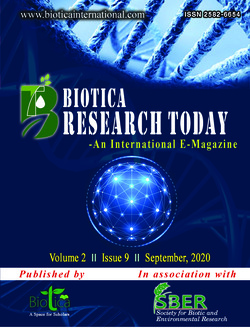
Biofortification: A Promising Way to Alleviate Malnutrition
G. Prasanna
Dept. of Genetics and Plant Breeding, College of Agriculture, Rajendranagar, Hyderabad, Telangana (500 030), India
Ch. Ravali*
Dept. of Soil Science, PJTSAU, College of Agriculture, Rajendranagar, Hyderabad, Telangana (500 030), India
DOI: NIL
Keywords: Biofortification, Golden rice, Malnutrition, Multi-biofortification
Abstract
Regular consumption of biofortified crops in developing countries where micronutrient deficiency is common has been shown to increase micronutrient intakes and thus help meet the World Health Organization's dietary recommendations. In terms of micronutrient status, most research has been conducted using provitamin A-biofortified crops (particularly orange sweet potato), with large 2 to 3 years studies indicating increases in plasma retinol, though additional studies measuring change in body stores would provide more definitive evidence. There is some evidence to suggest that iron-biofortified crops can increase iron status (measured by serum ferritin and total body iron), but further studies are required to demonstrate the efficacy of zinc-biofortified foods.
Downloads
not found
Reference
Debnath, J., Dey, J.K. and Dey, P., 2019. Zinc biofortification and importance of zinc. Biotica Research Today. 1(1), 10-11.
Naqvia, S., Zhua, C., Farrea, G., Ramessara, K., Bassiea, L., Breitenbachb, J., Conesac ,D.P., Rosc, G., Sandmannb, G., Capella, T. and Christou, P., 2009. Transgenic multivitamin corn through biofortification of endosperm with three vitamins representing three distinct metabolic pathways. Proc. Natl. Acad. Sci. USA 106, 7762– 7767.
